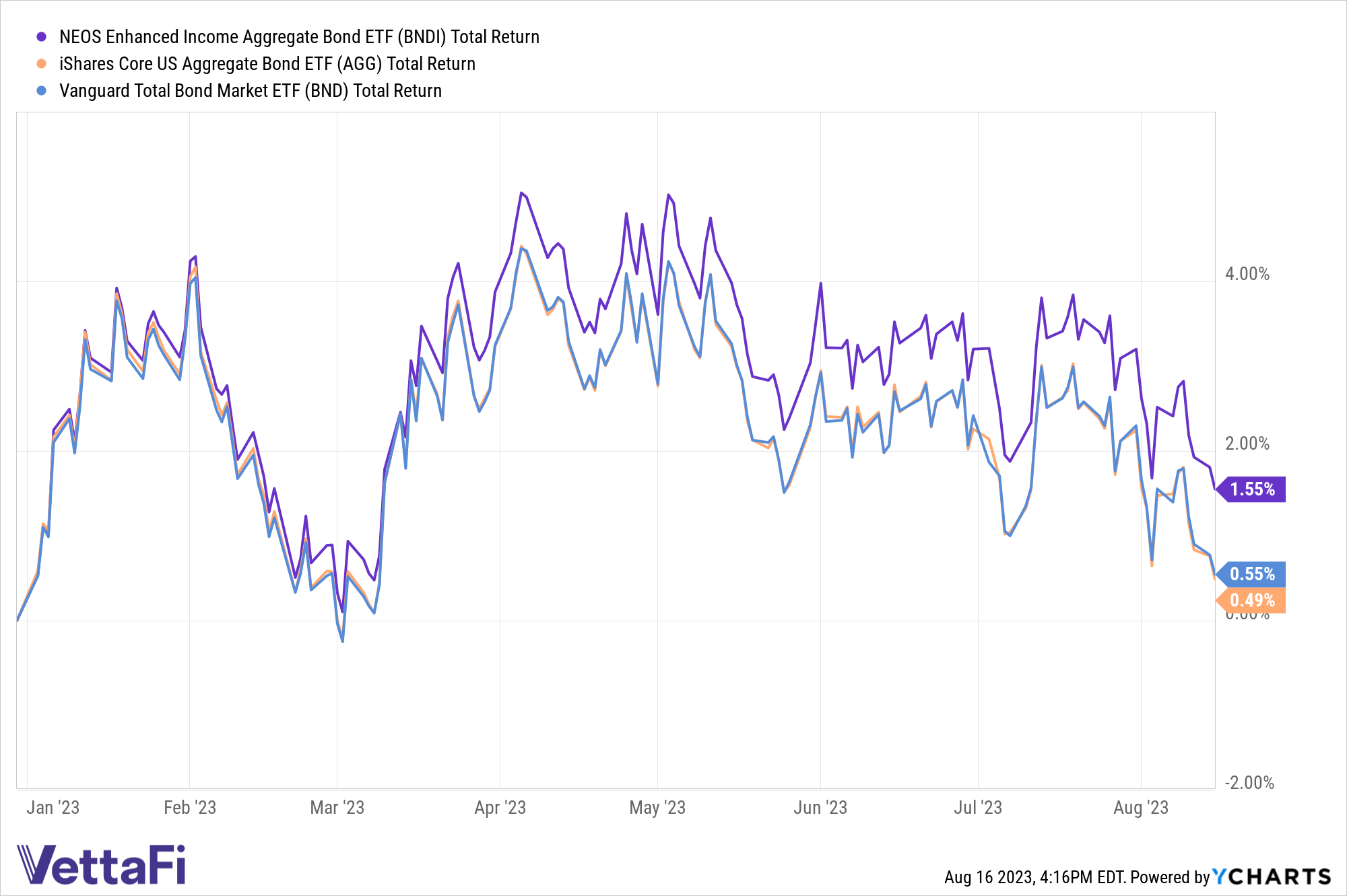Bond yields continue to climb this year, with the 10-year Treasury note hitting its highest level in 15 years on Wednesday. Advisors and investors considering increasing allocations to the broad bond market should look to the NEOS Enhanced Income Aggregate Bond ETF (BNDI), given outperformance year-to-date.
Markets currently predict that the most recent interest rate hike from the Fed is likely the last. July’s Fed minutes may challenge that narrative as the regulatory body sees the potential for more hikes. A tight labor market alongside still-high inflation creates ongoing potential for “significant upside risks to inflation,” according to meeting notes.
The yield on the 10-year Treasure note climbed Wednesday to a 15-year high of 4.258%. Yields move opposite prices in bonds.
Should the Fed continue to raise rates, it could tip the economy into the recession investors hoped could be avoided. There is a precedent for high bond yields creating a negative impact on equities. This generally manifests when investors aren’t optimistic about the forward-looking company earnings and profits. For now, that optimism is still alive, given consumer spending and this most recent earnings season.
High yields in bonds also tend to pull investments away from riskier assets. The appeal of relatively risk-free investing in buying and holding Treasuries to term when profits are high is notable.
When Investing in the Broad Bond Market, Look to BNDI
Investors looking to increase bond allocations should consider the NEOS Enhanced Income Aggregate Bond ETF (BNDI). BNDI continues to prove a strong performer compared to the broad bond market.

BNDI is outperforming the benchmark by 100 basis points YTD on a total returns basis, as measured by the iShares Core U.S. Aggregate Bond ETF (AGG) and the Vanguard Total Bond Market ETF (BND). As of the end of July, BNDI had a distribution yield of 5.17% and a 30-day SEC yield of 2.32% (excludes income from options).
The fund invests in BND and the AGG. However, the income and capital gains BNDI receives from its bond allocations are enhanced by adding monthly income from the fund’s put-option strategy on the S&P 500. The strategy includes selling short puts and buying long puts to protect against volatility.
The strategy may offer positive returns in both flat and rising equity markets. It may also generate positive returns in moderately declining equity markets. This is possible if the premium from the puts bought and sold is greater than the cost to close out the positions. BNDI may also offer a lower correlation to certain risk factors such as duration, credit, and inflation risk.
BNDI’s put options aren’t ETF options but S&P 500 index options. These options are taxed favorably as Section 1256 Contracts under IRS rules. The IRS treats options held at the end of the year as if the investor had sold on the last market day of the year at fair market value. Most importantly, the IRS taxes any capital gains as 60% long-term and 40% short-term, no matter how long the fund held them.
This treatment can offer noteworthy tax advantages. In addition, the fund’s managers also may engage in tax-loss harvesting opportunities throughout the year on the put options.
BNDI currently has an expense ratio of 0.58%.
For more news, information, and analysis, visit the Tax-Efficient Income Channel.

